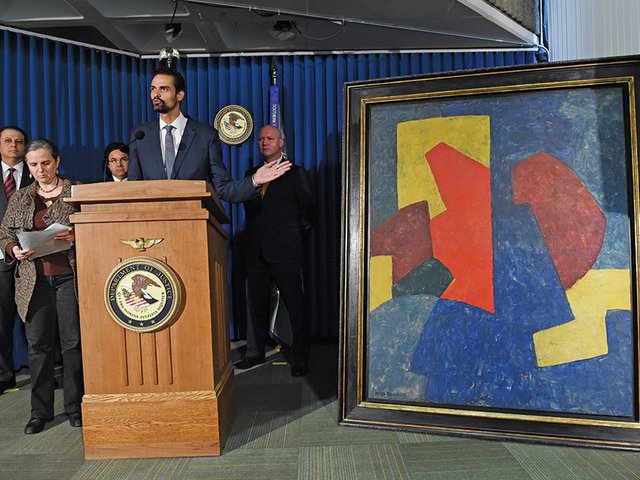Pressure on the UK’s art trade is increasing as it faces a wave of legislative changes and increased attention from enforcement agencies.
As UK courts introduced new sentencing guidelines for criminal damage to heritage assets on 1 October, the trade was counting down to the anti-money-laundering regulations that are coming into force in January and pushing for a judicial review of the contentious Ivory Act 2018.
Last month, a London court sentenced Guy Buckle and Sik-Hung Or to 28 months imprisonment for exporting carved ivory fans to Hong Kong and the US. Although the pair were convicted under the Customs & Excise Management Act 1979, not the new Ivory Act which is yet to come into force, Detective Constable Sarah Bailey who led the investigation, said she hoped the “sentencing highlights that this type of activity is illegal and acts as a deterrent to those involved in the illegal sale and export of such items.”
Earlier this year, the European parliament also introduced stringent regulations on the import of cultural goods—implementing a joined-up licensing system—and the sector is struggling to keep up.
Emily Gould, a senior researcher at the Institute of Art and Law, said: “There’s definitely been a push of activity and courts are starting to take notice. Enforcement agencies are also becoming better equipped to tackle the specialist nature of these crimes, but there’s still work to be done to raise awareness.”
New laws on laundering
Some of the toughest changes come from legislation not designed with the art trade in mind; namely, money laundering. The fifth EU Anti-Money-Laundering Directive will bring in higher standards of due diligence than the previous directive, introduced in 2017, and art and antiques dealers and auction houses will become one of the regulated sectors: anyone trading in works valued at €10,000 or more—regardless of whether the sum is paid in cash or otherwise—will be obliged to verify customers’ identity.
“This is going to incur a seismic shift for the art market and the way it does business,” says Susan Mumford, the chief executive of Artaml, a company developing online anti-money-laundering tools for the art market.
These shifts are part of an international drive to tackle crime in the art sector. The 2016 conviction and hefty nine-year sentence of Islamist militant Ahmad al-Faqi Al-Mahdi by the International Criminal Court was significant, as the main charge against him was the destruction of cultural property in Timbuktu. More often the cultural property offence is one of a broader set of charges.
More recently, the antiquities-trafficking bureau in New York, spearheaded by the assistant district attorney, Matthew Bogdanos, has been making an impression—notably with its very public seizure of a Persian relief from the London-based Rupert Wace Ancient Art at Tefaf New York in 2017. The parties settled out of court and the relief was returned to Iran.
Meanwhile, in July the Manhattan-based art dealer Subhash Kapoor was charged on 86 felony counts for allegedly looting $145m in antiquities since at least 1974, prompting museums to review their collections. The same month, 682 stolen artefacts were seized as part of the multinational Interpol operation Pandora III.
The deliberate targeting of cultural property in recent Middle Eastern conflicts, high profile cases and growing media attention are likely to be contributing to the increased scrutiny.
“One of the most confusing things is the overlap between many of these laws, without any clarity as to how they work together in practice,” says Fionnuala Rogers, a lawyer with Constantine Cannon who specialises in cultural property.
“A dealer may have to consider several different definitions that could apply to one object, different date thresholds and potentially multiple requirements to obtain permits and certificates.” A 2017 convention by the Council of Europe to improve the harmonisation of offences is yet to come into force.





